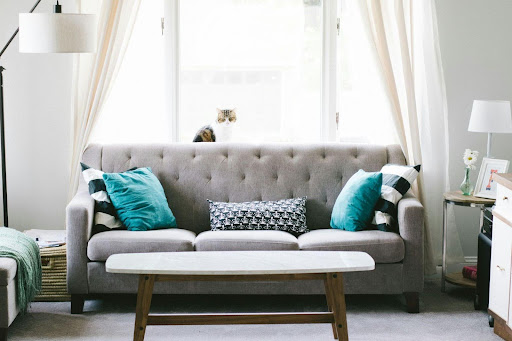In today’s world of fast fashion and disposable goods, more people are rethinking the way they shop—and furniture is no exception. Sustainability in interior design is more than a trend; it’s a conscious choice that prioritizes durability, craftsmanship, and environmental responsibility. Choosing long-lasting furniture doesn’t mean sacrificing aesthetics. On the contrary, well-made pieces can blend seamlessly with your personal style while supporting a greener planet. Whether you’re furnishing a new home or upgrading a single room, understanding the materials, construction, and even the types of dining table legs can make a huge difference in selecting furniture that stands the test of time.
Why Fast Furniture Fails
Much like fast fashion, “fast furniture” is designed for quick turnover. These pieces often rely on inexpensive materials like particleboard and veneer, which are more prone to damage, warping, or breaking within just a few years. The allure of affordability and instant gratification masks a larger issue: short-term furniture is more likely to end up in landfills, contributing to environmental degradation.
Worse, the production of these items often involves unsustainable practices—mass deforestation, poor labor conditions, and excessive energy consumption. In contrast, long-lasting furniture is typically made with better raw materials and thoughtful design, resulting in a lower carbon footprint over time.
What Makes Furniture Sustainable
When we talk about sustainable furniture, we’re referring to more than just its environmental impact. True sustainability encompasses the full lifecycle of the piece—from raw material sourcing and production, to durability, longevity, and even how it’s disposed of or repurposed later.
Hardwood from responsibly managed forests, recycled metal components, natural textiles, and low-VOC finishes are common hallmarks of sustainable construction. Additionally, manufacturers that provide transparency about their sourcing or who hold certifications from organizations like the Forest Stewardship Council (FSC) or GREENGUARD signal that you’re investing in ethical production.
Durability is equally important. A beautiful sofa made of eco-conscious materials loses its sustainable edge if it can’t survive more than a few years of use. Quality craftsmanship—dovetail joints, solid wood frames, reinforced corners—ensures that your furniture won’t just look good but will continue to perform over decades.
Timeless Design: Style That Grows With You
One of the secrets to choosing long-lasting furniture is opting for timeless design. Instead of chasing fleeting trends, look for pieces with clean lines, neutral tones, and adaptable functionality. Classic forms—like mid-century modern, Scandinavian, or industrial—tend to age well and adapt to different interior styles as your tastes evolve.
Timeless furniture also resists the urge to be over-embellished. Simplicity not only adds to longevity from a visual standpoint, but it also minimizes parts that can break or wear out. For example, a well-constructed wooden dining table with metal legs can seamlessly fit into a rustic, minimalist, or contemporary home with just a few accessory swaps.
And let’s not forget modularity—furniture that can evolve with your needs. Extendable tables, sectional sofas, and stackable chairs are smart choices for growing households or changing spaces.
The Role of Craftsmanship and Materials
The true backbone of sustainable furniture is craftsmanship. Handmade or small-batch furniture often places greater emphasis on detail, quality control, and pride in the final product. While mass-produced options may save money upfront, their flaws often become evident within months—wobbly joints, peeling finishes, and surfaces prone to stains or scratches.
Materials also speak volumes about a piece’s longevity. Hardwoods like oak, walnut, or maple age beautifully and resist warping. Metal, especially when powder-coated, is strong and rust-resistant. Even natural fibers—like organic cotton, linen, or wool—are preferable to synthetic alternatives, both for health and durability.
It’s also worth looking for furniture with replaceable parts or upgradable features. For instance, being able to swap out a damaged table leg or reupholster a chair keeps a beloved piece functional and stylish for much longer.
Vintage, Upcycled, and Second-Hand Pieces
Photo by Spacejoy on Unsplash
Choosing furniture that lasts doesn’t always mean buying brand new. Vintage and second-hand pieces often come with stories, character, and proven durability. Solid wood dressers from decades past are often sturdier than today’s flat-pack equivalents. Reclaimed wood tables, factory carts turned into coffee tables, or antique cabinets can become showpieces in your home while diverting waste from landfills.
Upcycling is another creative, sustainable route. With a bit of effort, a dated piece can be transformed into something modern and useful. Painting, re-staining, or even replacing drawer pulls can revive a piece for a new chapter of life in your space.
Buying used is also a great way to access high-quality craftsmanship at a lower price point, all while reducing demand for new resource consumption.
Making Conscious Consumer Decisions
Sustainability is about intention. Before making a furniture purchase, it’s worth asking: Who made this? What materials were used? How long will it last? Can it be repaired or recycled? These questions help you avoid impulse purchases and move toward a more responsible, informed approach to decorating.
Opting for local furniture makers or brands with transparent sustainability policies supports small businesses and reduces the carbon emissions associated with international shipping. Even packaging matters—furniture wrapped in recyclable materials or flat-packed to reduce volume is preferable to bulky styrofoam-laden deliveries.
You can also go a step further by choosing multi-use or modular items that maximize value and function over time. A bench with storage, a bed frame with built-in drawers, or a coffee table that doubles as a workstation are just a few examples of furniture that serves multiple roles and reduces your need to buy more.
Sustainable Furniture in Every Room
Creating a stylish, long-lasting home doesn’t require an overhaul—it just takes thoughtful choices. Start with the rooms where you spend the most time. In the living room, a solid wood coffee table paired with a natural-fiber rug can serve as the anchor for many design themes. A high-quality sofa with a replaceable cover offers both longevity and flexibility.
In the dining area, choosing a durable dining table with well-constructed legs can not only improve stability but also serve as a gathering place for years to come. In bedrooms, opt for classic wooden dressers, nightstands with strong hardware, and beds with solid frames instead of flimsy headboards or particleboard bases.
Even in smaller spaces like entryways or home offices, investing in a single well-crafted piece—such as a console table made of reclaimed wood or an ergonomic chair built from recycled materials—can set a sustainable tone.
And for those seeking data-backed guidance on sustainable interior choices, organizations like the U.S. Environmental Protection Agency (EPA) offer insights into the lifecycle impacts of furniture and materials, helping consumers make better-informed decisions that benefit both their homes and the planet.

